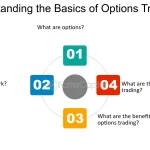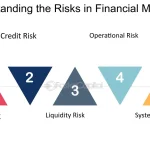Understanding the Basic Principles of Profitable Trading
Trading, especially in the world of stocks, commodities, and foreign exchange, can be a lucrative endeavor. However, it is critical to comprehend the basic principles of profitable trading before embarking on this journey. These core principles will guide your trading decisions and substantially increase the likelihood of consistent profitability.
Defining Your Trading Goals
Defining your trading goals is the initial step in the realm of profitable trading. This involves identifying your financial goals, time horizon, risk tolerance, and trading style. A clear understanding of these elements shapes your trading strategy and determines the assets to invest in.
Understanding Market Trends
Appreciating and interpreting market trends is another fundamental principle in profitable trading. A successful trader should have the ability to recognize the trends in the market and make informed decisions based on these trends. This may require developing technical analysis skills or subscribing to news that significantly impacts one’s trading niche.
Managing Risk
Effective risk management should not be downplayed when it comes to profitable trading. As soon as you hit the ‘Buy’ or ‘Sell’ button, you expose your capital to risk. Therefore, it is advisable to assess potential losses and employ strategies such as stop-loss orders to prevent considerable financial loss. Remember, preserving your capital helps to stay in the game longer and take advantage of more trading opportunities.
Common Mistakes That Make You Unprofitable in Trading
Trading is a popular way to grow your portfolio and potentially earn substantial profits. But as with any investment, it’s not without its pitfalls. Many novice and even experienced traders fall prey to common mistakes that lead them from profitability to losses. Let’s delve into these common errors
 Understanding the Basics: What is Trading and How Does It Work?
Understanding the Basics: What is Trading and How Does It Work?Misunderstanding Market Trends
An important aspect of trading is understanding market trends. A common mistake made by traders is not fully understanding or misinterpreting these trends. They may be misled by short-term fluctuations, failing to see the bigger picture. This could lead to premature buying or selling, resulting in a loss when market trends move in the opposite direction.
Lack of Risk Management
Another common error in trading is a lack of risk management. Many traders, especially beginners, may get carried away by the potential of big gains, completely neglecting their risk exposure. They might invest a large portion of their capital in a single trade or fail to set stop-loss orders. This could expose their investment to enormous risk, potentially wiping out their entire trading account.
Impatience and Emotional Decision Making
Perhaps one of the biggest mistakes that traders make is acting out of impatience and allowing emotions to guide their decisions. The desire for quick profits can lead to hasty decisions, while fear of missing out (FOMO) can encourage rash actions during a volatile market. Such emotional trading often results in poor decisions and subsequent losses.
Strategies to Enhance Your Trading Profitability
Increasing your trading profitability isn’t just about opting for the highest yielding investments, but it also dwells on the core aspects of planning, analysis, and disciplined approach. Here, we outline few comprehensive strategies that we believe can aid in enhancing your overall trading profitability.
Understanding and Mastering the Market
One of the most fundamental ways of improving profitability is to thoroughly understand and master the market. This covers extensive research into the particular markets you’re investing in, keeping up-to-date with global financial news, and be evolving with the ever-changing market trends. The more insights and knowledge you have about your market, the more savvy investment decisions you can make.
 Understanding the Basics: What is Trading and How Does It Work?
Understanding the Basics: What is Trading and How Does It Work? Understanding the Risks: How Safe is Trading in Today’s Financial Market?
Understanding the Risks: How Safe is Trading in Today’s Financial Market?Employing Risks Management Strategies
Profitability is also hugely influenced by how you manage your risks. It’s crucial to plan a sound risk management strategy which details how to mitigate losses when a trade does not go as planned. This can include setting stop orders, diversifying investments or keeping a close eye on market volatility.
Investing in Continuous Learning
Trading is a continuous learning experience. Markets evolve, new trends emerge, and investment products diversify. To stay profitable, it’s pivotal to invest time in continuously updating your skills, trading techniques and analytical tools. Join trading courses, seminars, and workshops to keep abreast with latest investment strategies.
The Role of Risk Management in Profitable Trading
Risk Management in trading is an essential strategy that pertains to identifying, assessing, and managing potential risks that may arise in trading. It forms the backbone of successful trading, allowing traders to minimize their losses while enhancing profit potential. To put it simply, profitable trading heavily relies on effective risk management techniques.
Identifying Risks
Identifying potential risks is the first step towards developing a sturdy risk management strategy. This involves tracking market trends, understanding the implications of geopolitical events, and staying updated with financial news. A trader who keeps abreast of these factors is less likely to be caught off guard by sudden market shifts.
Assessing and Managing Risks
The next steps are assessing and managing identified risks. Assessment involves determining the potential impact of the risk, while management deals with implementing the right measures to mitigate these risks. Techniques such as stop-loss orders, diversification, and position sizing play important roles here.
 Understanding the Basics: What is Trading and How Does It Work?
Understanding the Basics: What is Trading and How Does It Work? Understanding the Risks: How Safe is Trading in Today’s Financial Market?
Understanding the Risks: How Safe is Trading in Today’s Financial Market? Unveiling the Secrets: Who is the Most Profitable Trader in the World?
Unveiling the Secrets: Who is the Most Profitable Trader in the World?Impact on Profitability
Risk management not only helps in limiting losses, but is also instrumental in enhancing profitability. A well-managed portfolio tailored according to risk appetite and trading goals can provide steadier returns in the long run. Therefore, the role of risk management in profitable trading cannot be understated.
How to Become a Profitable Trader: A Step-by-Step Guide
Ever wondered what it takes to make successful investments in the markets and consistently capitalize on market movements? Becoming a profitable trader might seem daunting, but it’s definitely attainable. The key is to equip yourself with the right knowledge and strategies that maximize your winning probabilities.
Understand Market Principles First
No one becomes a master overnight, and trading is no different. Start by understanding global market dynamics: how different factors and events can influence stock, commodities, and currency values. Familiarize yourself with terms like bullish, bearish, dividends, and volatility. Use online resources, read books, attend workshops, and make the effort to educate yourself thoroughly.
Look for High Probability Trades
A key tactic in becoming a profitable trader is to identify high probability trades. This means looking out for situations where the odds are in your favor – for instance, a strong uptrend or downtrend with sufficient volume. Don’t just jump into trades because they seem attractive without understanding the risk involved. Always monitor and evaluate your trades and learn from your successes and failures.
Always Have a Plan
One essential trait that separates successful traders from the herd is having a precise trading plan and sticking to it. Include elements like entry points, exit points, risk and reward ratio, and money management in your plan. The markets can be unpredictable, but a well-crafted plan enables you to navigate them logically, rather than emotionally.
 Understanding the Basics: What is Trading and How Does It Work?
Understanding the Basics: What is Trading and How Does It Work? Understanding the Risks: How Safe is Trading in Today’s Financial Market?
Understanding the Risks: How Safe is Trading in Today’s Financial Market? Unveiling the Secrets: Who is the Most Profitable Trader in the World?
Unveiling the Secrets: Who is the Most Profitable Trader in the World? Unveiling the Best Trading Strategies: A Comprehensive Guide for Success
Unveiling the Best Trading Strategies: A Comprehensive Guide for Success